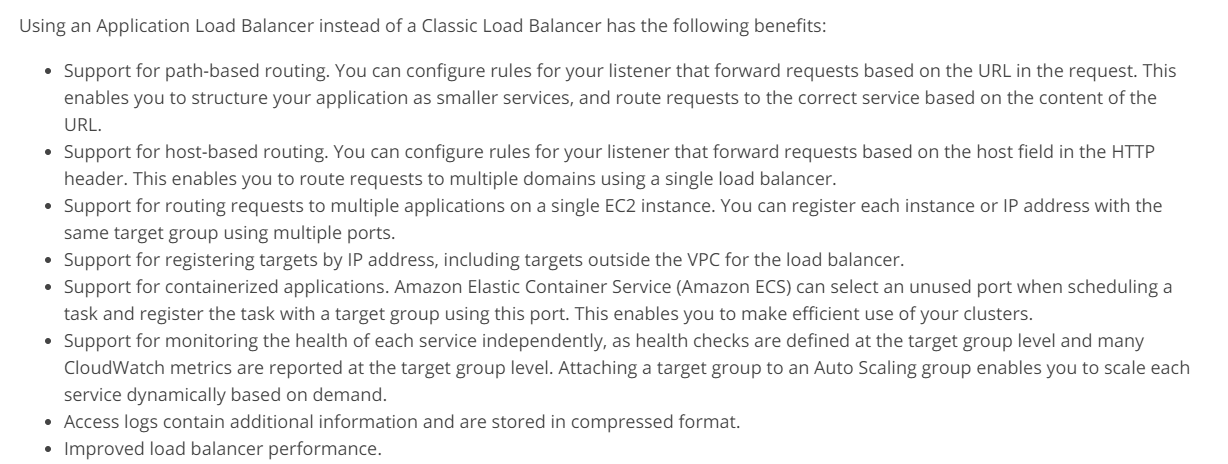Load Balancing for AWS Application Routes
Question
You are an architect for a company that is going to host an application in AWS.
They want to load balance the traffic based on which route the user chooses.
The 2 possible routes for the application are /customer and /orders.
Which of the following would you include in the design?
Answers
Explanations
Click on the arrows to vote for the correct answer
A. B. C. D.Answer - A.
The below snapshot from the AWS Documentation shows the benefits of using the Application Load balancer.
Options B and D are incorrect since we don't have enough information on the question to decide on whether to use Docker containers or not.
Option C is invalid since Classic Load balancers will not fit the requirement for route-based load balancing.
For more information on the Application Load Balancer, please refer to the below URL-
https://docs.aws.amazon.com/elasticloadbalancing/latest/application/introduction.html
For load balancing the traffic based on the route the user chooses, you would need to use an Application Load Balancer (ALB). Therefore, the correct answer is A.
Here's a detailed explanation of why:
A. Application Load Balancer (ALB): ALB is a Layer 7 load balancer that can route traffic based on the content of the request. ALB can route traffic to different target groups based on the path (such as /customer and /orders), host, HTTP header, and HTTP method. ALB is the best choice for routing traffic to containers, microservices, and serverless applications.
B. EC2 Container Service: EC2 Container Service is a container management service that allows you to run Docker containers on a cluster of EC2 instances. While this service can help with managing containers, it is not directly related to load balancing traffic based on the path of the request.
C. Classic Load Balancer (CLB): CLB is a Layer 4 load balancer that can route traffic based on the IP address and port of the request. It does not have the ability to route traffic based on the path of the request.
D. Docker containers on EC2 instances: While it is possible to run Docker containers on EC2 instances, this option does not provide load balancing capabilities based on the path of the request. You would need to use an additional tool, such as NGINX, to implement this kind of routing.
In summary, an Application Load Balancer (ALB) is the best choice for load balancing traffic based on the route the user chooses.